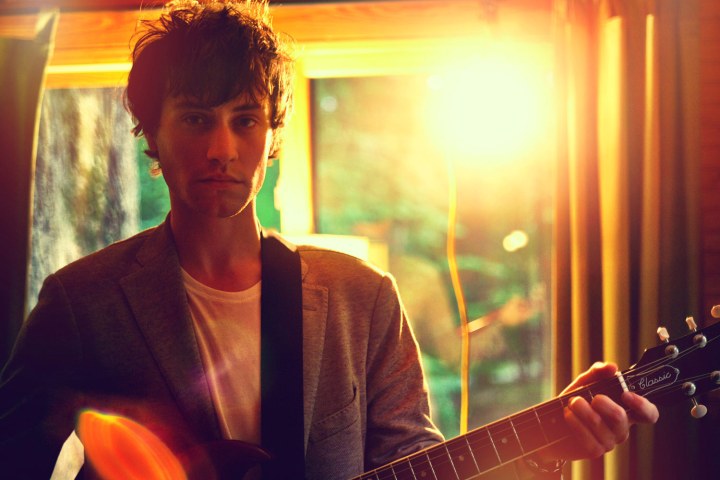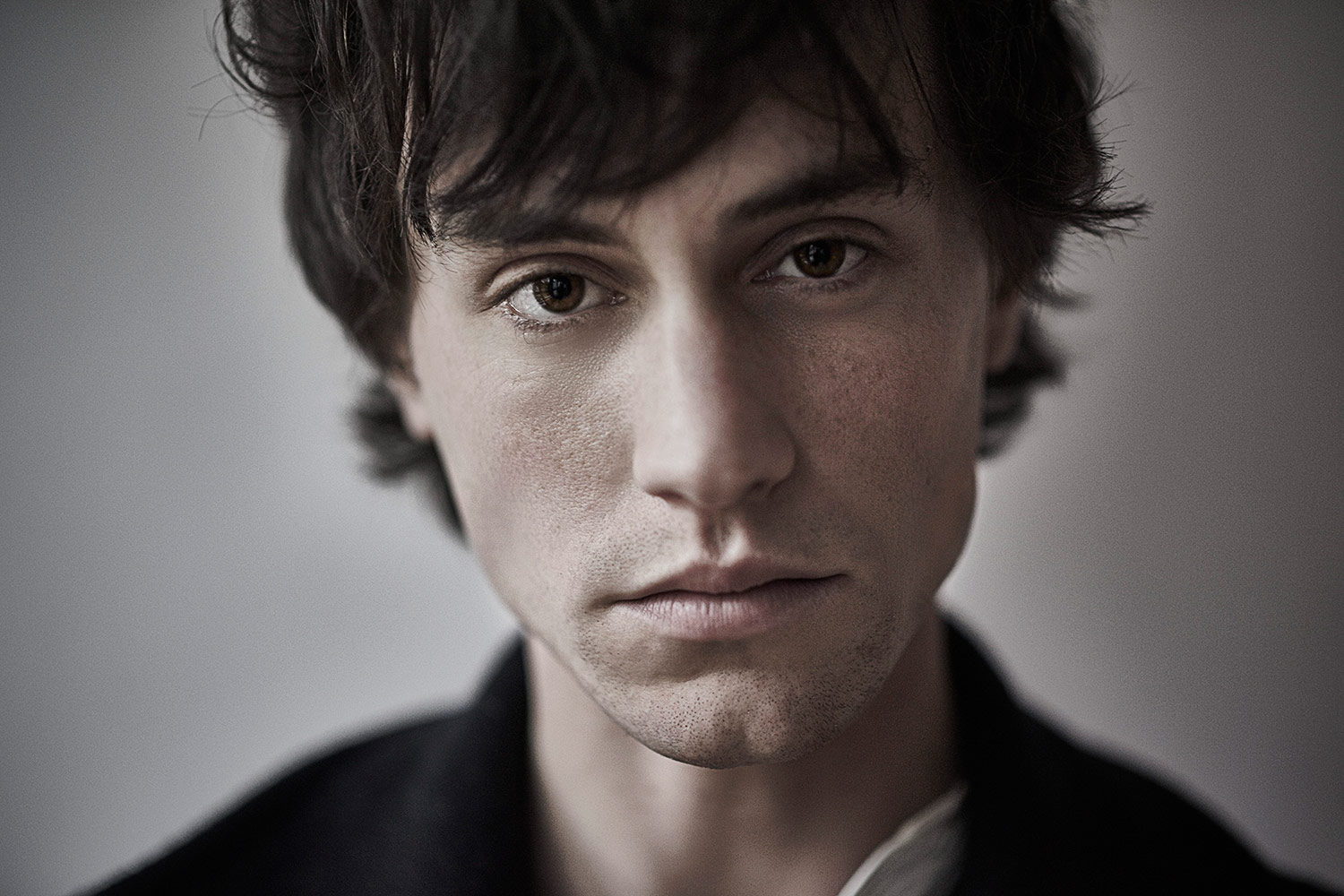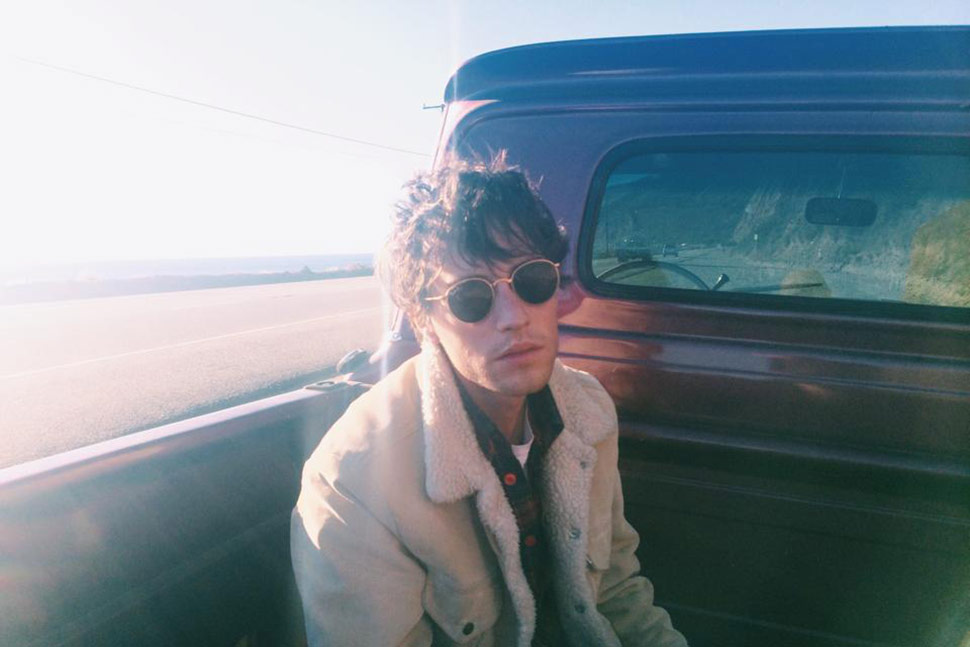
“I secretly write about them, hopefully without them knowing,” Max Jury confessed over the phone.
The country-infused soul singer from Des Moines, Iowa called from London days before launching his U.K. tour. Like many artists, Jury mixes the autobiographical — his life as well as the experiences of his friends — with the poetic in his songwriting.
When we caught up with Max Jury, he was counting down the days until the release of his self-titled debut album. His two EP’s, Something in the Air and All I Want, preceding this album are brimming with instrumentally skillful and lyrically conversational tracks that speak to the undeniable talent of the 24 year-old singer-songwriter. Though his early recognition has been primarily for his soulful ballads, Jury showcases his versatility on this record.
With upwards of forty songs written, recording started at the legendary Electric Lady Studios in New York. “I went from recording in basements to recording at this historical location … it was surreal.” Returning home to finish his album, Jury left the studio with a clear direction in mind for his new album, which is available now.
Digital Trends: Talk to me about your album. Where were you in life? Describe the setting for when you were writing it.
Max Jury: Most of it was written in between tour dates I would say. I did a lot of demoing and recording sessions. When I was at home in Des Moines, and I wasn’t on tour, or doing other various things. I would shack up in my basement and start writing. It was an interesting process because I have a hard time writing everyday but every month or two, I’d feel particularly inspired and write 3-4 songs that made the record in one day. It went in spurts. Recording started last summer in New York. I went into the session in New York basically not having a clue really what I wanted to do for the album, what songs I wanted to have on it. I mean I had maybe 40 songs, demos, that I was considering and the label was considering putting on the album. And then, I went to New York and hooked up with this producer and started fleshing out some of the early ideas as to how I wanted the record to sound, what songs would make the most sense on the record. From that point, after that session, I had a clear idea of what I was wanting to do to finish it on my own at home.
Who would you count as some of your early influences?
Early on, it was a lot of the usual suspects: the Beatles, the [Rolling] Stones … but when I was seven or eight, I wasn’t above the Backstreet Boys or NSYNC. I’m still not.
Who is? Deep down, who actually is?
I could confidently say that I am a fan of NSYNC and Backstreet Boys *laughs*. But after I while though, I started being more particular. I got into a lot of soul music, a lot of Al Green and Curtis Mayfield, especially from a vocalist standpoint. A lot of Elliot Smith, too — I listened to him a ton when I was growing up, I really enjoy his music. A lot of country, too, because that was just around the house and the world I lived in. No new country, mostly Willie Nelson and Townes Van Zandt. Those are the big ones.
What about earlier soul and country influences did you first connect with?
I listened to… A lot of country, too… No new country, mostly Willie Nelson and Townes Van Zandt. Those are the big ones.
I think initially it was a sonic thing, hearing the voice of someone like Al Green and thinking, “How can a human being sound like that? That’s amazing.” Or even Curtis Mayfield, or the Staple Singers. As you study it more, you learn that you really like the production values or certain instruments. Like you’re really drawn to that thunder roads sound that is really present in those recordings. The very tight, produced, simple string lines that you’re drawn to, the drum sounds and how groovy it is. Stevie Wonder too was a big one for me. There was a period, I guess in the early seventies where I thought his stuff was so amazing, like it was just an endless supply of good music coming from him.
With music, do you think that less is more? Why or why not?
I absolutely think less is more. I am an advocate for less is more. I think there’s a lot of, I’m not sure if pressure is the right word, to put as many things as you can on a song and to make it as big as possible and as anthemic sounding as possible. I’ve never been really drawn to that. I’ve always liked the simplicity of a couple instruments. If you have four or five instruments, and what each person is doing is vital and important, then you don’t need to put a ton of other things on it. I also like experimenting with space. I like having openness and space in the recordings, not have everything trying to be shoved in there.
Is there one track that between writing it and recording it, sound-wise, turned out completely different than how you thought it would?
Yeah, there are several, but there is one that stands out in my mind. The song called, “Princess”, it’s midway through the record. It started out just me on piano, and then I switched it up to acoustic guitar, and it had this folk, Elliot Smith-eque thing going on. Neither of those were sitting right and then we ended up having strings in the beginning, then added some electronic drums with a pretty heavy beat, spaghetti western electric guitar, different strings throughout, synths, experimental guitar lines. Not necessarily melodic but added interest. It turned into a much bigger production than I originally had anticipated. It ended up suiting the song, and it goes against what I just said about less is more. It’s probably the busiest song on the record from a production standpoint. I think it ended up working.
What is your favorite type of show to attend? Does that have any bearing on how you do your own live shows?
I think so. That’s a good question. I’m not a huge festival guy, in terms of going to see shows. It’s a weird setting to see music, and I know that’s kind of the future of live performance. I feel like, as an attendee and as an audience member, it’s not the best place to see some bands. Some bands I don’t think are meant to play summery festivals because it creates this world where the most rhythmic, immediately uptempo, catchy song is the winner in that setting. You can get a bit greedy too with bands. I’ve been to festivals where I’ve seen bands play that I would kill to see, and then I end up leaving 15 minutes early to see another band.
Band hopping.
Yeah! It’s like if St. Vincent was playing or something at a club in Des Moines, I’d spend two weeks up to it being excited. I like seeing shows in intimate settings. You connect more with the music and the performer. You get to know them a little bit better, and that’s what I like to play.
Music videos for a number of the LP’s singles including “Great American Novel” and “Beg and Crawl” have been released to promote the album. Not yet promoting tour dates for North America, Max Jury’s self-titled debut album was released on June 3.






